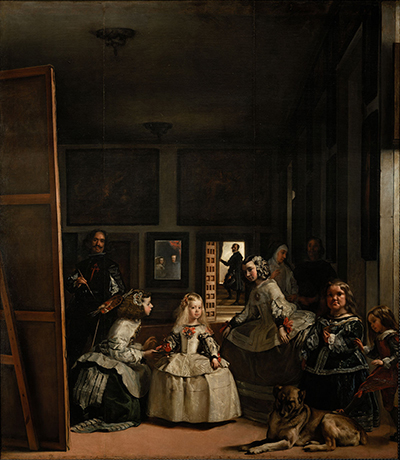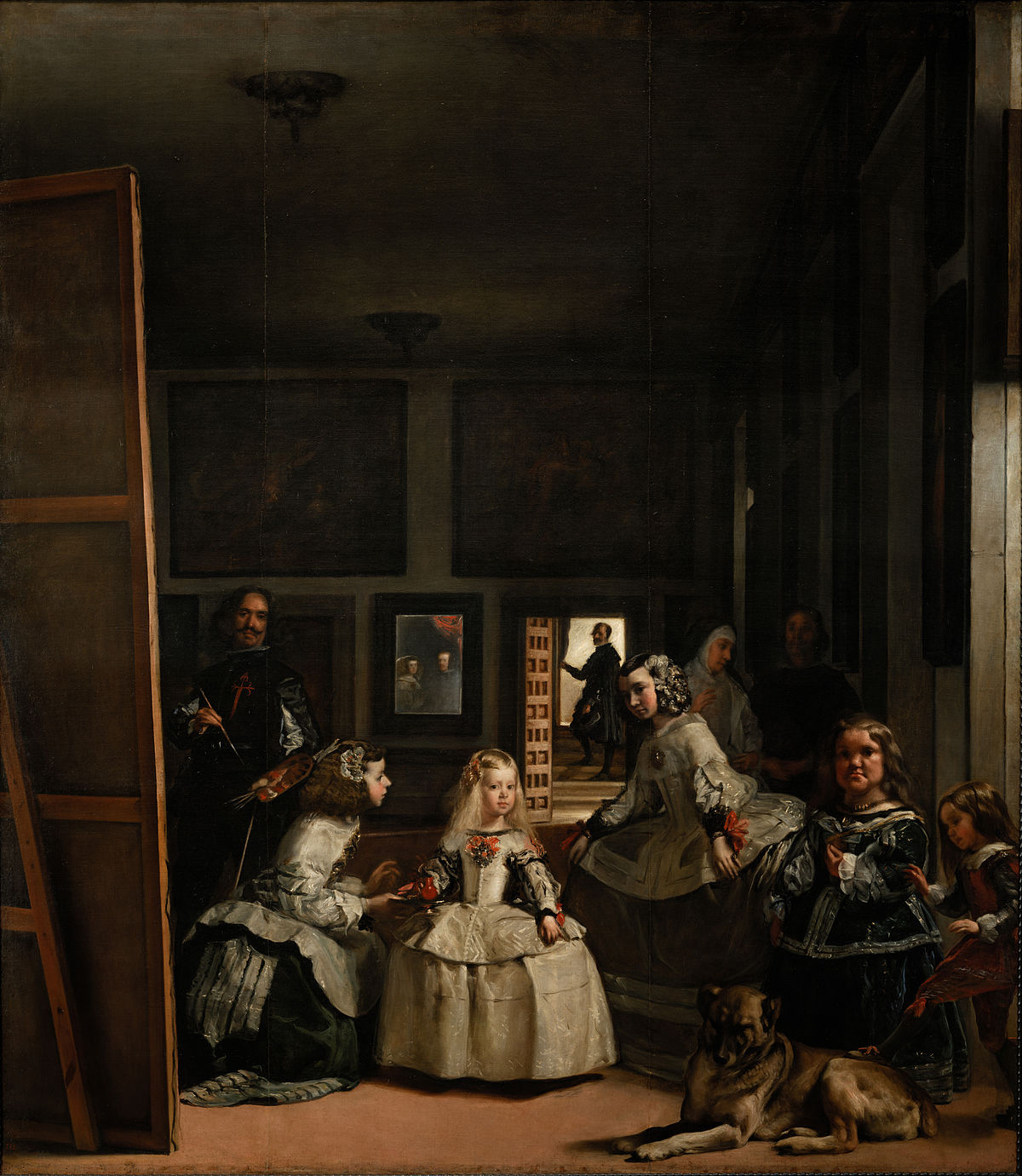Las Meninas
One of the most famous and most analysed paintings in the Western world, Las Meninas, painted by the renowned artist Diego Velázquez now stands proud in the Museo del Prado, Madrid having been deemed too important to be moved

What is it that makes this painting so famous, so discussed and still at the forefront of art critic's conversation?
Painted in 1956 and originally entitled "Ia Familia", Velázquez made several alterations before unveiling the work as Las Meninas ("The Ladies in Waiting") As far as a piece of artwork can be, it took it's place immediately as a modern masterpiece.
The subjects, the composition and the detail were beautifully complex and thus began it's place in history.
Owing to the artist's unusually close relationship with the royal household (Velázquez had been the artist in residence for 33 years at the time of painting Las Meninas), he had direct access into both poignant figures and moments in their life.
Velázquez had two great advantages when he painted this scene: his own studio within the palace (the "pieza principal" or ""main room" of the King's late son, Balthazar Charles) and a somewhat friendly relationship with the King himself.
Philip IV was ageing and becoming reluctant to allow portrayal of his figure, though he agreed to feature alongside his wife (Mariana of Austria) in Las Meninas. Whether the couple are the intended main subjects remains open to debate. The King and Queen appear as a reflection in a mirror on the back wall of the studio.
There is a busy scene in front of them. Their only surviving child at that point, the five year old Infanta Margaret Therese is radiant in the central foreground of the painting as she is attended to by two ladies in waiting (doña Isabel de Velasco and doña Maria Agustina Sarmiento de Sotomayor).
Velázquez himself appears in the painting, left of centre and attending to a canvas of what is commonly assumed to be his painting of the King and Queen (hence, their reflection appearing in the mirror behind). Several other less prominent characters adorn the scene, adding a little depth, complexity and chaos to the painting.
Not least, 2 dwarfs are depicted to the right of the princess causing a bit of mischief as one of them tries to rouse a sleeping dog with his foot.
The dwarves are known to be the German Maria Barbola and the Italian Nicolas Pertusato, whilst the dog is thought to be a mastiff and the descendent of 2 mastiffs given to King Phillip III from James I of England in 1604.
Behind them stands the chaperone of the Infanta Margaret Therese (Marcela de Ulloa) as she talks to an unnamed bodyguard. The eleventh and final character in the scene is Don José Nieto Velázquez, the Queen's chamberlain and head of royal tapestry. It is hypothesized that he was related to the artist.

The key points of discussion around the painting centre on what the key subject of the painting is. Many theories suggest that the painting has a multi layered approach to the idea of the artist simply painting the King and Queen.
The perception of the painting and the characters within it make it clear that these two prominent figures are present in the room, though out of direct eyesight to viewers of the painting.
Their reflection is central to the composition and it has been observed that of the nine remaining characters, five are looking outwards to both where the royal couple would be and also to where the viewer observes them. Some other theories exist however, that are worth considering.
One highly regarded theory was put forward by the art historian Ernst Gombrich. He suggested that originally the Infants Margaret Therese was present to add an element of fun to what would otherwise be a dull sitting for the King and that the King himself suggested to Velázquez that his daughter would make a worthy subject, thus sowing the seed for an entirely different painting and the one which we discuss.
Key subject aside, what has never been denied is the superb way in which Velázquez used light, the perception of depth and reflection to create an ever changing scene, depending on how one views it. On light, Velazquez masterfully uses illumination to highlight the focal points of the picture.
The obvious light source from the right glances off the inferior subjects (namely, the female dwarf and the lady in waiting to the right of the Infanta) but illuminate the face of the Infants herself, bathing her and ensuring that she has the attention of the viewers.
The reflecting light then bounces off the artist's self portrait, allowing him to be a key figure in the busy scene. Lastly, the King and Queen are daringly placed into a mirror whose edges are gleaming against a darkening wall.
As the English director Jonathon Miller shrewdly observes: "the most important way the mirror betrays it's identity is by disclosing imagery whose brightness is so inconsistent with the dinners of the surrounding wall that it can only have been borrowed, by reflection, from the strongly illuminated figures of the King and Queen".
What is left in no doubt is that the Infanta, the artist himself and King and Queen are the focal points. On perception and spatial awareness, this is the only painting in which the artist depicts a ceiling. He uses it masterfully to guide the viewer to the illusion that the King and Queen are just 'there', outside of the painting and very much key to the scene.
Velázquez is noted to have skilfully used measured geometry in the background in a sharp contrast to the unordered activity in the foreground.
On the use of reflection, general consensus is that Velazquez was inspired by the work of Jan van Eyck, specifically the painting Arnolfini Portrait, which hung in the palace. The use of the mirror is a subtle but wonderful way of allowing a portrait-shy King to be a key focal point.
As a painting, it is masterful and can be seen to be an accumulation of the artist's skills. His previously uniform and conventional royal paintings developed into this complex piece as he toyed with different concepts in his other works, such as the use of a mirror in Rokeby Venus.
The painting was altered slightly after the artists death, some state by the King himself. The red cross of the Order of Santiago was added to Velázquez's chest as he was posthumously awarded the honour in 1959. Otherwise, analysis has concluded that usual pigments of the period including lead white, vermilion and carbon black were the materials used at the time.
The work of art is standing the test of time, though is invariably showing signs of wear. Despite this, the use of colour and contrast is still notable and it is hoped that the preservation work will continue to maintain and restore this historical masterpiece.